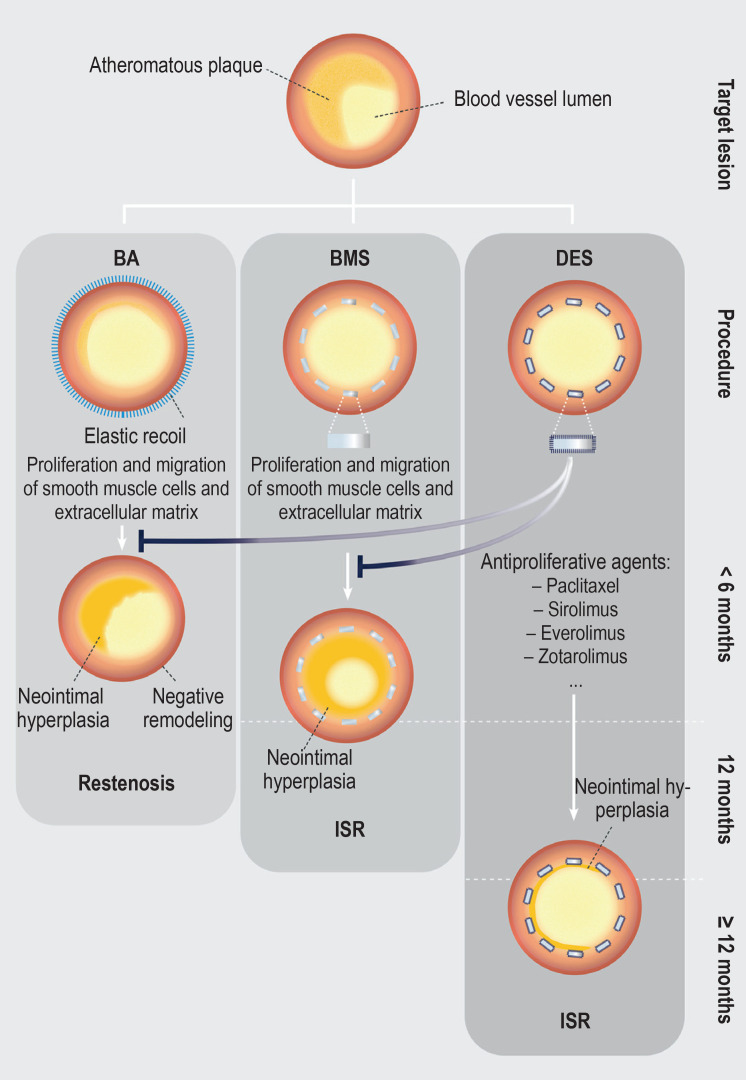Figure.
Development of coronary in-stent restenoses after percutaneous coronary intervention (adapted from [40])
Left: Coronary restenosis after standard balloon angioplasty is primarily caused by elastic recoil of the vessel wall. In addition, the injury to the coronary artery activates the proliferation and migration of smooth muscle cells as well as the creation of an extracellular matrix. The formation of neointimal hyperplasia can ultimately lead to the development of restenosis.
Center: As it causes a higher degree of vascular injury, the implantation of a bare metal stent (BMS) increases the extent of neointimal hyperplasia and consequently the risk of developing in-stent restenosis (ISR).
Right: Drug-eluting stents (DES) release antiproliferative agents and thus reduce the extent of neointimal hyperplasia along with the risk of developing ISR.

